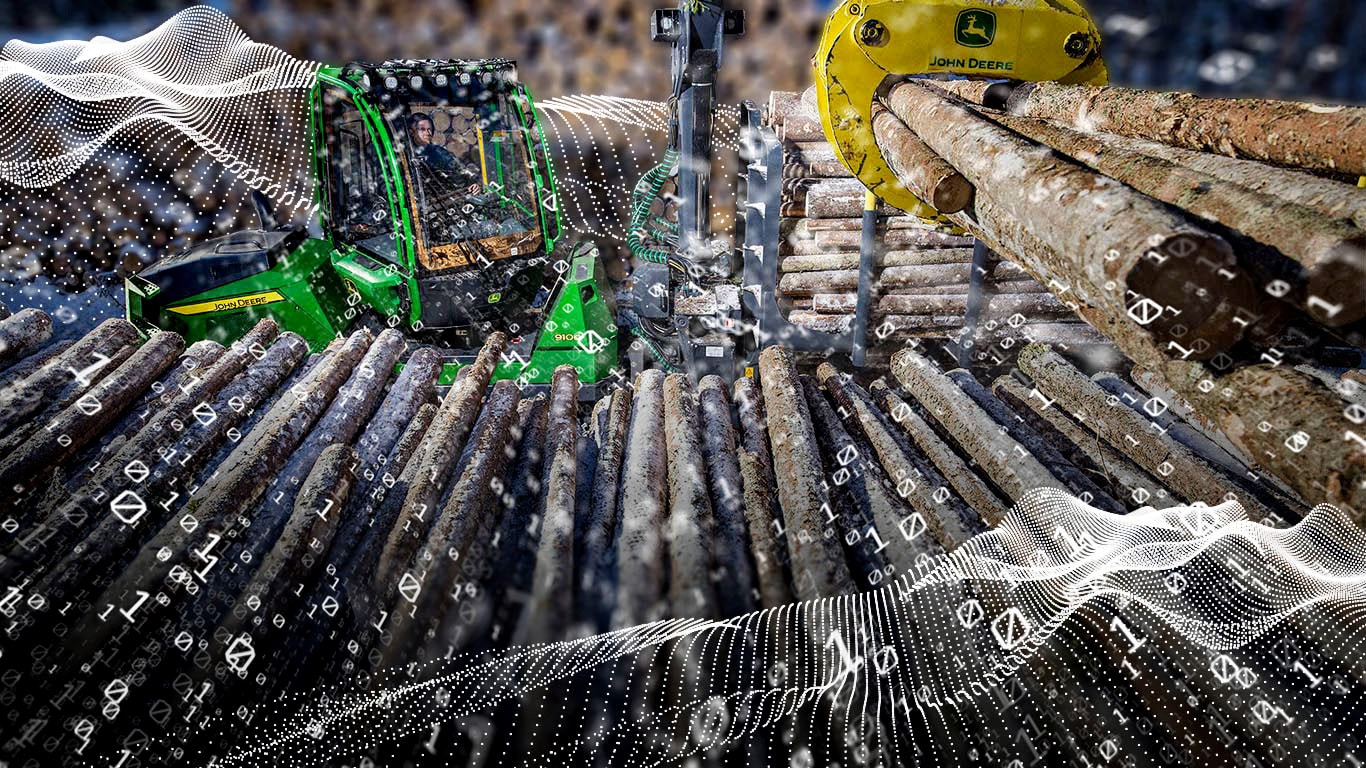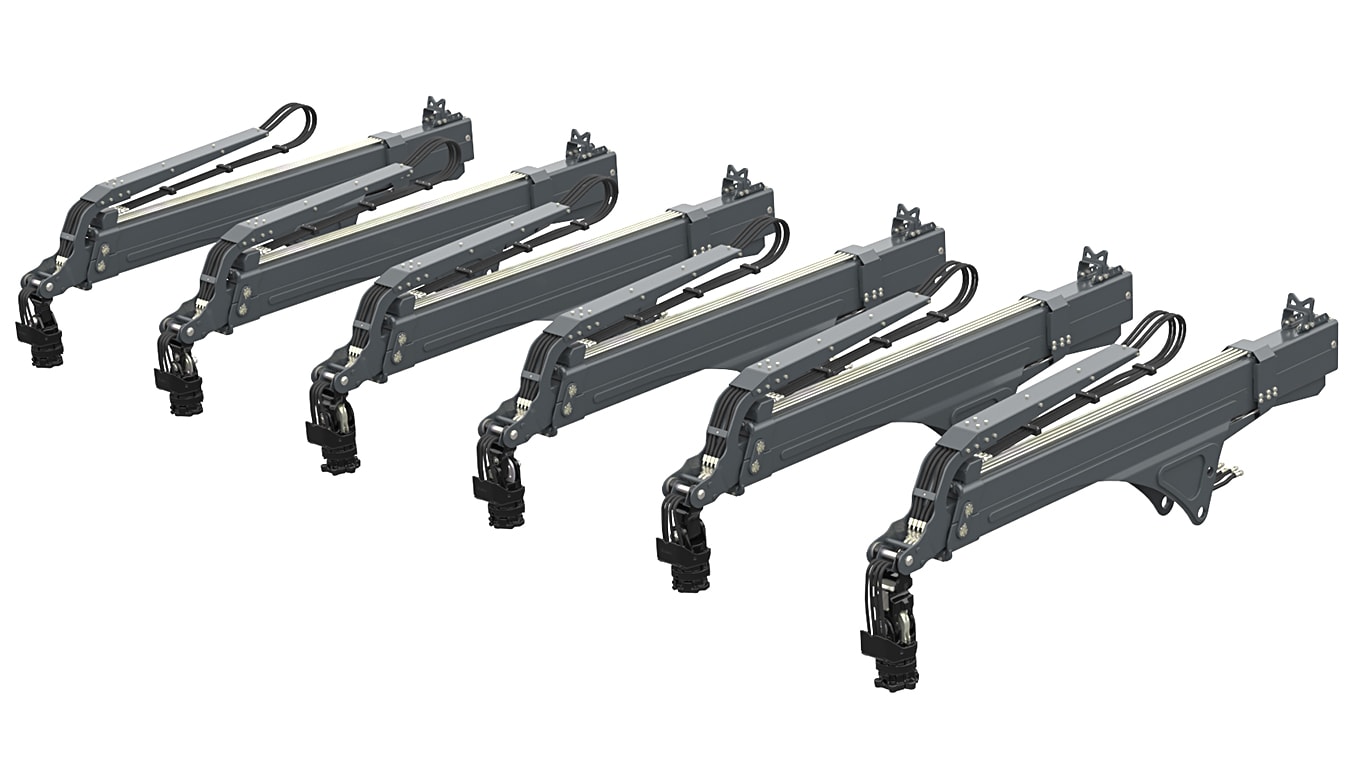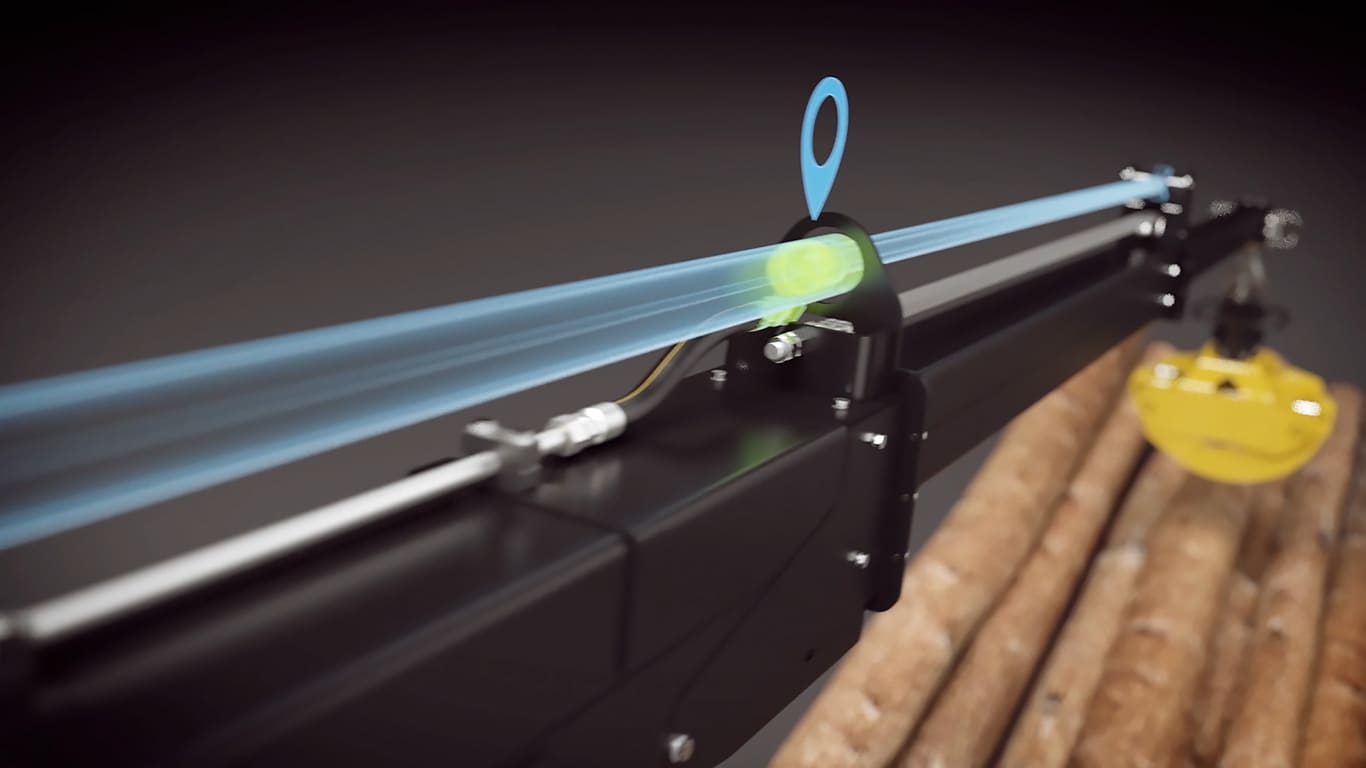Maintenance and Support
You May Also Be Interested In
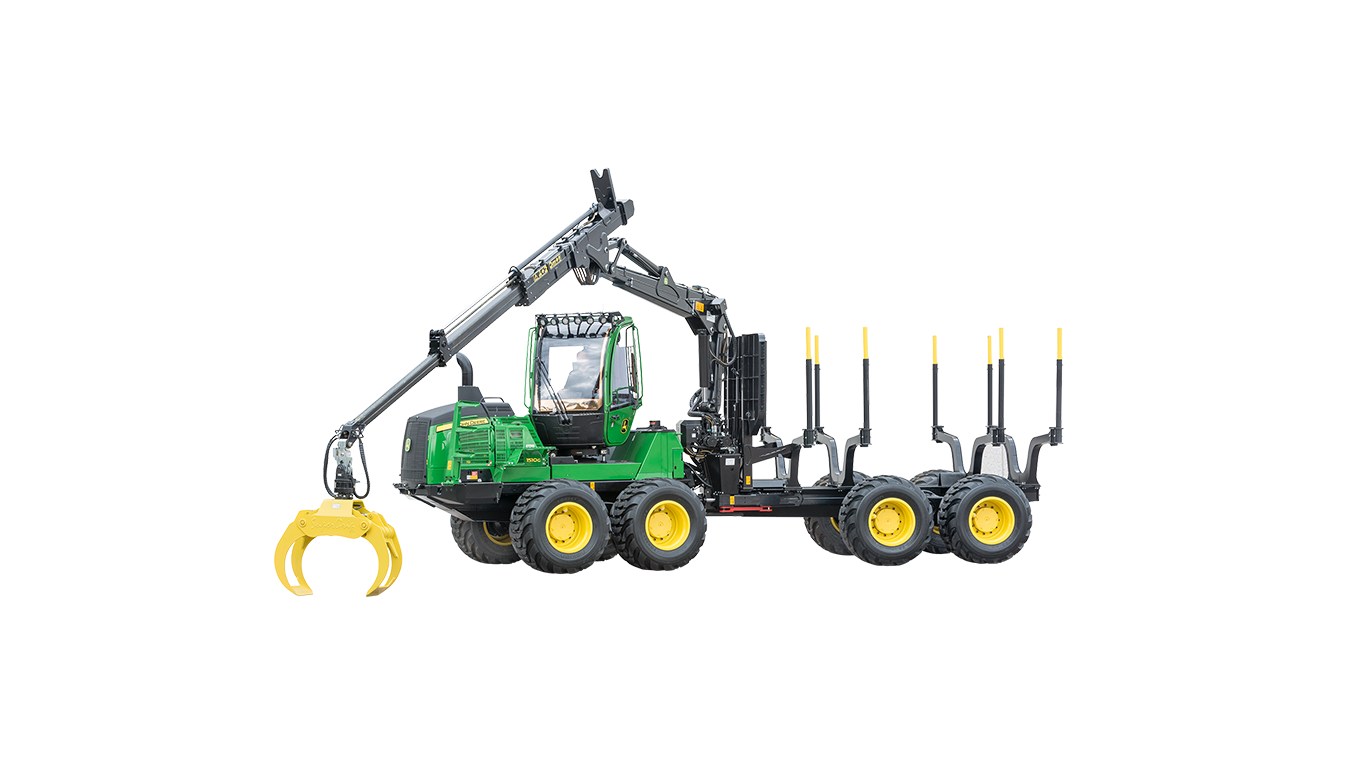
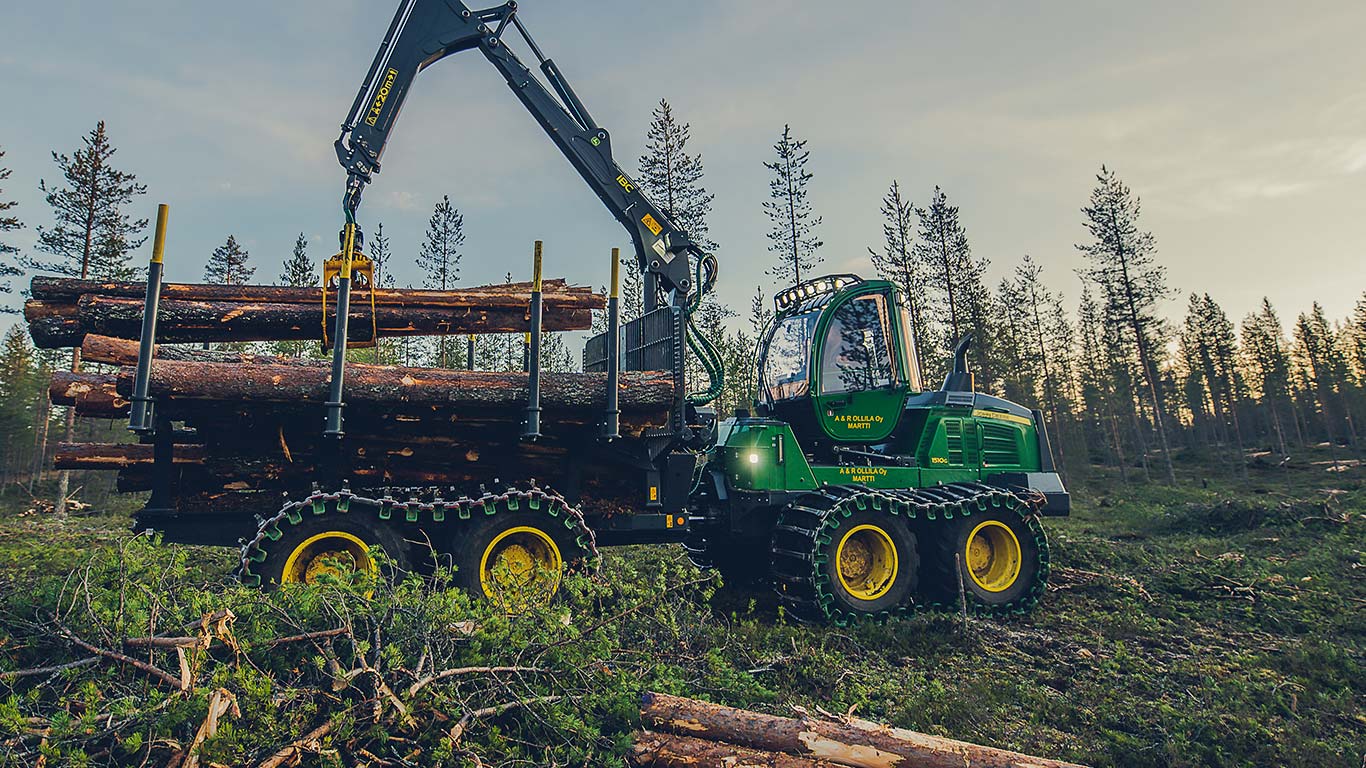
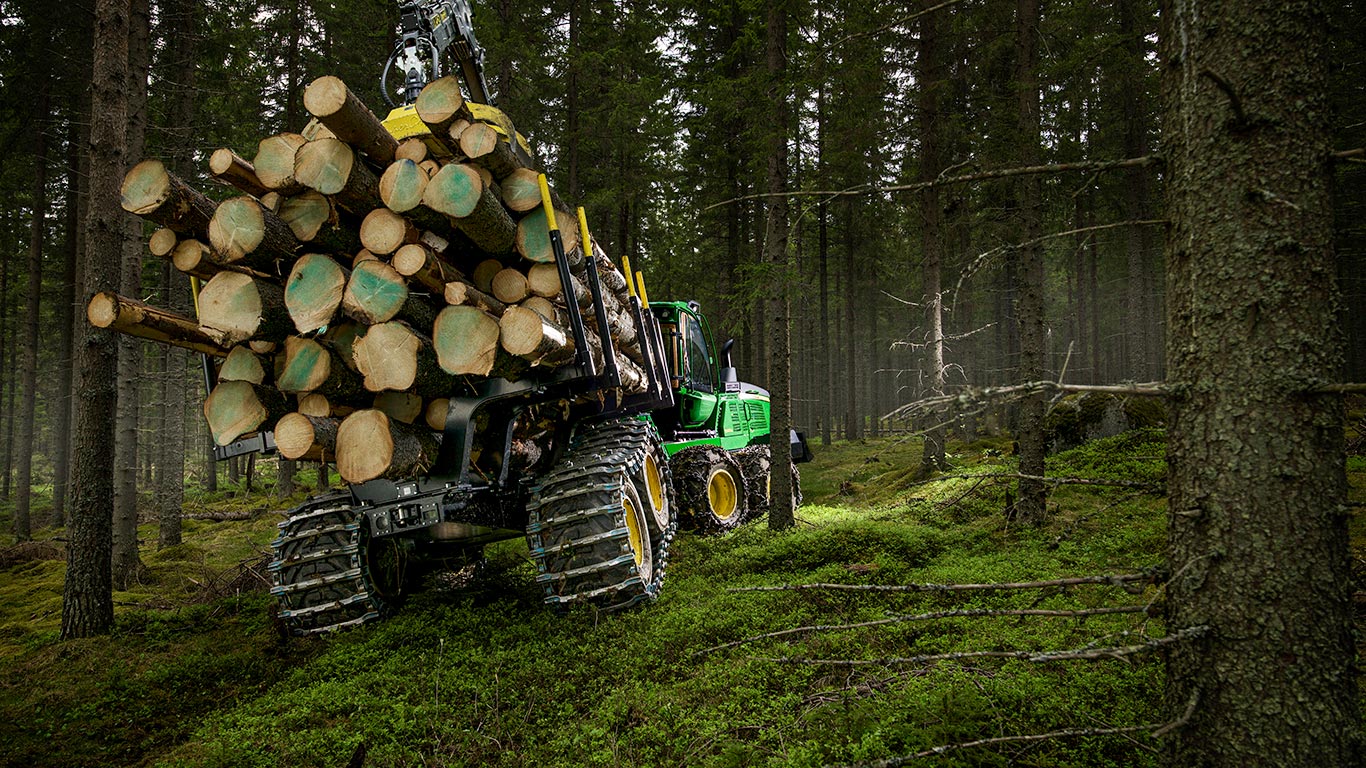



1510G Forwarder
- Precise and efficient boom control
- Strong and powerful FT4 engine
- High torque
- Clear and simple electrical system
Exact location of each log
The data between the machines are updated through a cloud service, and all the operators working at the same work site can see all the tree species and assortments with the driving routes right down to the individual logs.
Timber in good order
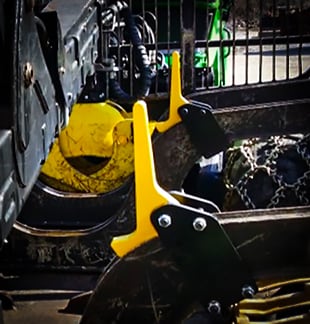
Sorters make it easy to sort the timber in the forwarder’s load area. Sorters are easy to use. The tiltable sorters can be quickly tilted with the grapple. The sorters stand about 20 cm high when vertical and about 10 cm when tilted.
With TimberMatic Maps, the different assortments can be highlighted with different colors by marking them as favourites. This together with the sorters, helps to separate the assortments and to build the load already sorted which speeds up the unloading considerably.
Specifications
Collapse all
Expand all
1510G
Engine |
John Deere 6068 Power Tech Plus, 6,8 l
|
Tractive force |
185 kN |
Boom |
|
Load space |
|
Load rating |
15 000 kg |
Control system |
TimberMatic |
Cabin |
Fixed or rotating and leveling |
Min. weight with fixed cabin |
|
Width from |
|
Turning angle |
+44o |
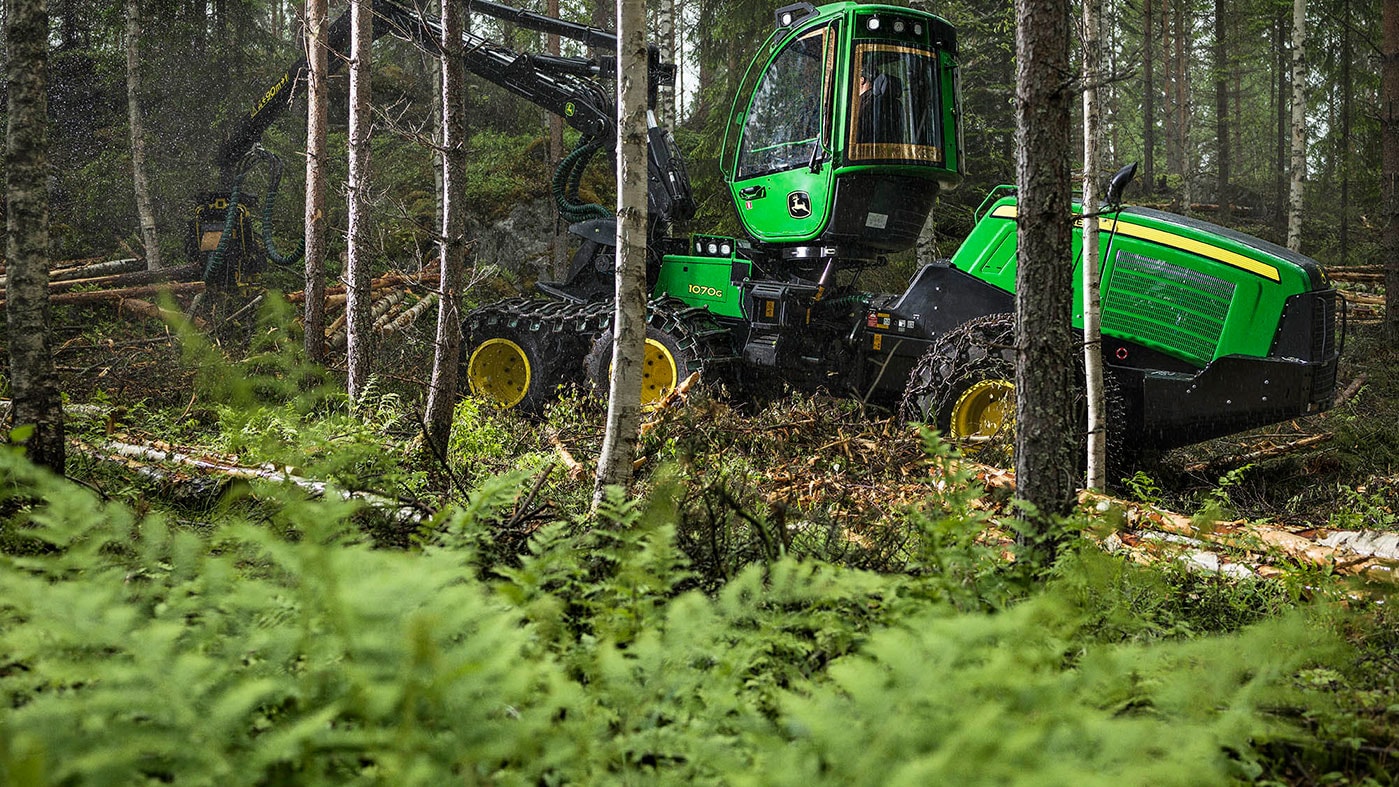
Product program
Product Program wheeled cut-to-length
Powerful XE-extension
The XE-extension is a single extension and jib boom with external hosing for CF5, CF7 and CF7S 8,5 m booms of the small and mid-size forwarders.
Electrical cylinder end damping
The Intelligent Boom Control features electrical end damping for all the main boom movement directions. The system dampens the cylinder end movements softly and stops strong blow-like loads in the end positions.
Main features
Collapse All
Expand All
Intelligent Boom Control IBC
The IBC (Intelligent Boom Control) option is a milestone in forest machine technology. The boom is accurate and easy to operate: the operator controls the boom tip directly instead of controlling independent boom joint movements. The system also considerably reduces the number of tuning parameters needed and increases durability of boom structures and hydraulic cylinders.
Boom functions as one
The IBC system enables you to control the entire loader as one unit and you no longer need to learn to control several different boom movements together. Controlling the grapple is similar to controlling the movements of your own hand. The IBC system guides the boom wherever the operator wants to take the grapple. The system has predefined limit values and it adjusts boom operations within these limits according to need. In the latest 2.0 version of intelligent boom control, the precision of the grapple control has been improved, especially in long reaches. The software uses information about the grapple position, and the speed of the rotation in long reaches matches that of short reaches.
IBC system also has a separate, preprogrammed option for unloading, where the strong jib and main boom movements are used more.
Electrical cylinder end damping
The IBC system also features electrical end damping for all the main boom movement directions. The system dampens the cylinder end movements softly and stops strong blow-like loads in the end positions which makes driving smoother and also improves the durability of the boom.
Operator adjustments
Operators can adjust the overall speed of the IBC system according to their needs. They can also adjust the speed between various boom parts or change it by using the extension boom manually during operation. The system is switched on and off with the press of a button.
Adaptive driveline control
Adaptive driveline control is a unique standard feature in G-Series forest machines. This control system improves the machines’ drivability and productivity. The operator selects the desired driving mode (Eco, Normal, Power) for the operating conditions, and the system automatically adjusts the engine’s RPMs to correspond with the engine load and keeps the driving speed steady also during high loads.
The driveline control ensures that the diesel engine runs smoothly and uses the available maximum tractive force efficiently during high-load situations. Also the response of the drive pedal and frame steering have been improved with smart electronic filtering.
XI and XE jib booms
XI jib boom with hidden hoses
There are no holes, brackets or other accessories at the front of the jib boom which would weaken the boom or would be prone to impact damage. Hoses and cables are covered by the boom structure and the hose routing between the main and jib boom and inside the extension pack have been redesigned.
Powerful XE jib boom
The XE-extension is a single extension and jib boom with external hosing for CF5, CF7 and CF7S 8,5 m booms. The design is simple and durable. It is easy to control due to good geometry, and visibility to the boom tip is very good with a boom light under the extension. Thanks to the outstanding extension pulling force, productivity is improved.
Well protected hose routing
The jib booms' Y-link hose routings are well protected and the hoses last long due to better routing. There are no external hose loops so the booms are easier to guide between trees in thinning and it is also easier to move the grapple between the bunks to the load space.
Precise and strong boom
The precision and power of the mid-sized G-Series forwarders’ boom control is unprecedented. Controllers, simplified CAN busses and streamlined electrical systems bring more power, speed and precision control to the boom.
The updates decrease malfunction sensitivity and accelerate troubleshooting. The number of fuses has been reduced thanks to controllers that recognize overcurrent situations and cut the feed when necessary to protect the equipment.
The optional intelligent boom control makes forwarder work easier and faster and it improves productivity. Boom control is precise, fast and easy because the operator can focus on controlling the grapple rather than the boom joint movements. In the latest 2.0 version of intelligent boom control, the precision of the grapple control has been improved, especially in long reaches. The software uses information about the grapple position, and the speed of the rotation in long reaches matches that of short reaches.
Rotating and leveling cabin
For meal breaks, the cabins feature a mini oven and refrigerator. The cabin’s interior materials were chosen with ease of cleaning in mind. The leather-like material on the interior pillars is easy to clean. The neoprene wiper blades are more durable than natural rubber blades. The ergonomic seat, air conditioning and heating, sun visors and sun blinds, and side widow wipers add to cabin comfort. Plenty of light is needed during dark hours, so the positioning of the lights has been continuously improved to enhance visibility during the autumn and winter.
Long-bogie version
A long-bogie version of the 1510G forwarder is available for logging on soft terrain. The distance between the front and rear wheel hubs in the rear bogie is 1890 mm, i.e. 390 mm longer than in the standard model.
The power train and turning radius are the same as with the standard HD portal bogie-equipped machine. The long-bogie solution is suitable for both normal and soft terrains. The long bogie brings stability when navigating over obstacles in rocky terrain, and the low ground pressure of the rear frame makes the machine an excellent choice for logging in soft terrain.
Control systems and automation
The TimberMatic control system and user interface on G-Series forwarders have been developed and improved to maintain the forest machine’s operational reliability. The TimberMatic features a configurable user interface, cruise control and inclination display. The software enables Remote Display Access (RDA) via the Internet (either MTG or other modem). RDA enables faster troubleshooting by servicing people and thus improves the machine’s uptime.
Forwarders have three modules: for the cabin, the front frame and the rear frame. TimberMatic’s troubleshooting diagnostics are detailed and illustrative. The CAN bus increases reliability of the electrical system: simple, fewer connections, a dedicated bus for the engine and the base machine.
TimberMatic Maps is standard in all new John Deere forest machines. Based on the real time data from Maps to TimberManager, distributed through a cloud service, the contractor can follow up forest machine’s production and remaining work on the site and plan the operations further.
FT4 engine
John Deere Final Tier 4 engines meet the required emissions regulations while also bringing more power and torque. The John Deere 6068 PowerTech Plus engine’s output and torque are clearly higher than its predecessor – about 5-8.5% higher, depending on the model.
Especially the low rpm ranges have much more torque than the E-models. The John Deere FT4 engine has the most torque in its class and a wide rpm range. The engine’s rpm remain steady during big and rapid changes in the load.
The better coupling of the powerful diesel engine with the power train results in improved tractive force and excellent manoeuvrability in the forest.
The FT4 engine and the entire fuel line can use 20% biodiesel.
Main features
Collapse All
Expand All
Intelligent Boom Control
The IBC (Intelligent Boom Control) option is a milestone in forest machine technology. The boom is accurate and easy to operate: the operator controls the boom tip directly instead of controlling independent boom joint movements. The system also considerably reduces the number of tuning parameters needed and increases durability of boom structures and hydraulic cylinders.
Boom functions as one
The IBC system enables you to control the entire loader as one unit and you no longer need to learn to control several different boom movements together. Controlling the grapple is similar to controlling the movements of your own hand. The IBC system guides the boom wherever the operator wants to take the grapple. The system has predefined limit values and it adjusts boom operations within these limits according to need. In the latest 2.0 version of intelligent boom control, the precision of the grapple control has been improved, especially in long reaches. The software uses information about the grapple position, and the speed of the rotation in long reaches matches that of short reaches.
IBC system also has a separate, preprogrammed option for unloading, where the strong jib and main boom movements are used more.
Electrical cylinder end damping
The IBC system also features electrical end damping for all the main boom movement directions. The system dampens the cylinder end movements softly and stops strong blow-like loads in the end positions which makes driving smoother and also improves the durability of the boom.
Operator adjustments
Operators can adjust the overall speed of the IBC system according to their needs. They can also adjust the speed between various boom parts or change it by using the extension boom manually during operation. The system is switched on and off with the press of a button.
Adaptive driveline control
Adaptive driveline control is a unique standard feature in G-Series forest machines. This control system improves the machines’ drivability and productivity. The operator selects the desired driving mode (Eco, Normal, Power) for the operating conditions, and the system automatically adjusts the engine’s RPMs to correspond with the engine load and keeps the driving speed steady also during high loads. The driveline control ensures that the diesel engine runs smoothly and uses the available maximum tractive force efficiently during high-load situations. Also the response of the drive pedal and frame steering have been improved with smart electronic filtering.
Long-bogie version
A long-bogie version of the 1510G forwarder is available for logging on soft terrain. The distance between the front and rear wheel hubs in the rear bogie is 1890 mm, i.e. 390 mm longer than in the standard model.
The power train and turning radius are the same as with the standard HD portal bogie-equipped machine. The long-bogie solution is suitable for both normal and soft terrains. The long bogie brings stability when navigating over obstacles in rocky terrain, and the low ground pressure of the rear frame makes the machine an excellent choice for logging in soft terrain.
Rotating and leveling cabin
For meal breaks, the cabins feature a mini oven and refrigerator. The cabin’s interior materials were chosen with ease of cleaning in mind. The leather-like material on the interior pillars is easy to clean. The neoprene wiper blades are more durable than natural rubber blades. The ergonomic seat, air conditioning and heating, sun visors and sun blinds, and side widow wipers add to cabin comfort. Plenty of light is needed during dark hours, so the positioning of the lights has been continuously improved to enhance visibility during the autumn and winter.
Precise and strong boom
The precision and power of the mid-sized G-Series forwarders’ boom control is unprecedented. New controllers, simplified CAN busses and streamlined electrical systems bring more power, speed and precision control to the boom.
The updates decrease malfunction sensitivity and accelerate troubleshooting. The number of fuses has been reduced thanks to controllers that recognize overcurrent situations and cut the feed when necessary to protect the equipment.
The optional intelligent boom control makes forwarder work easier and faster and it improves productivity. Boom control is precise, fast and easy because the operator can focus on controlling the grapple rather than the boom joint movements. In the latest 2.0 version of intelligent boom control, the precision of the grapple control has been improved, especially in long reaches. The software uses information about the grapple position, and the speed of the rotation in long reaches matches that of short reaches.
Control systems and automation
The TimberMatic control system and user interface on G-Series forwarders have been further developed and improved to maintain the forest machine’s operational reliability. The TimberMatic features a configurable user interface, cruise control and inclination display. The new software version enables Remote Display Access (RDA) via the Internet (either MTG or other modem). RDA enables faster troubleshooting by servicing people and thus improves the machine’s uptime.
The new control modules replace the FlexController modules used in the E-Series; it simplifies the electrical system and brings added processing capacity. Forwarders have three modules: for the cabin, the front frame and the rear frame. TimberMatic’s troubleshooting diagnostics are more detailed and illustrative. The CAN bus increases reliability of the electrical system: simple, fewer connections, a dedicated bus for the engine and the base machine.
TimberMatic Maps is standard in all new John Deere forest machines. Based on the real time data from Maps to TimberManager, distributed through a cloud service, the contractor can follow up forest machine’s production and remaining work on the site and plan the operations further.
FT4 engine
John Deere Final Tier 4 engines meet the required emissions regulations while also bringing more power and torque. The John Deere 6068 PowerTech Plus engine’s output and torque are clearly higher than its predecessor – about 5-8.5% higher, depending on the model.
Especially the low rpm ranges have much more torque than the E-models. The John Deere FT4 engine has the most torque in its class and a wide rpm range. The engine’s rpm remain steady during big and rapid changes in the load.
The better coupling of the powerful diesel engine with the power train results in improved tractive force and excellent manoeuvrability in the forest.
The FT4 engine and the entire fuel line can use 20% biodiesel.

